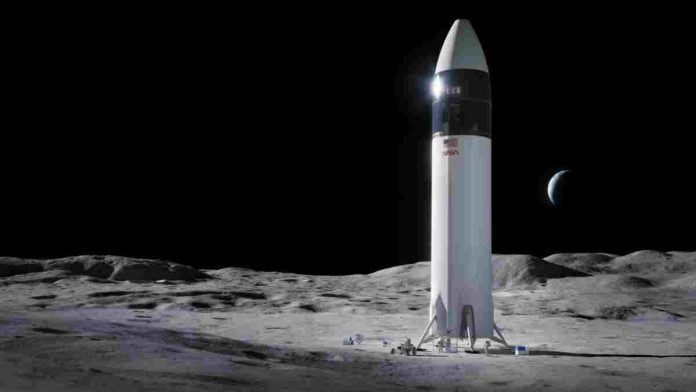NASA (National Aeronautics and Space Administration) on Friday selected Elon Musk’s SpaceX to develop the first commercial human lander that will carry two American astronauts on the moon for the first time since 1972.
For this purpose, SpaceX has been awarded a $2.89 billion contract by the U.S. agency to build the Artemis lunar lander, which involves testing the prototype Starship spacecraft at SpaceX’s South Texas facility.
SpaceX defeated Amazon founder Jeff Bezos’ Blue Origin and Alabama-based defense contractor Dynetics for the contract to be the sole provider for the system.
“With this award, NASA and our partners will complete the first crewed demonstration mission to the surface of the Moon in the 21st century as the agency takes a step forward for women’s equality and long-term deep space exploration,” said Kathy Lueders, NASA’s Associate Administrator for Human Explorations and Operations Mission Directorate.
“This critical step puts humanity on a path to sustainable lunar exploration and keeps our eyes on missions farther into the solar system, including Mars.”
NASA plans to land astronauts on the moon as early as 2024. It aims to land the first woman and the first person of color to land on the lunar surface under the Artemis program.
“We should accomplish the next landing as soon as possible,” Steve Jurczyk, NASA’s acting administrator, said during the video conference announcement. “The NASA team will have the insight into the progress that SpaceX is making and if they’re hitting their milestones we may have a shot at 2024.”
The agency’s powerful Space Launch System rocket will launch four astronauts aboard the Orion spacecraft for their multi-day journey to lunar orbit. There, two crew members will transfer to the SpaceX human landing system (HLS) for the final leg of their journey to the surface of the Moon.
After approximately a week exploring the surface, they will board the lander for their short trip back to orbit where they will return to Orion and their colleagues before heading back to Earth.
SpaceX has been working closely with NASA experts during the HLS base period of performance to inform its lander design and ensure it meets NASA’s performance requirements and human spaceflight standards. A key tenet for safe systems, these agreed-upon standards range from areas of engineering, safety, health, and medical technical areas.
SpaceX’s HLS Starship, designed to land on the Moon, leans on the company’s tested Raptor engines and flight heritage of the Falcon and Dragon vehicles. Starship includes a spacious cabin and two airlocks for astronaut moonwalks. The Starship architecture is intended to evolve to a fully reusable launch and landing system designed for travel to the Moon, Mars, and other destinations.
“This is an exciting time for NASA and especially the Artemis team,” said Lisa Watson-Morgan, Program Manager for HLS at NASA’s Marshall Space Flight Center in Huntsville, Alabama.
“During the Apollo program, we proved that it is possible to do the seemingly impossible: land humans on the Moon. By taking a collaborative approach in working with industry while leveraging NASA’s proven technical expertise and capabilities, we will return American astronauts to the Moon’s surface once again, this time to explore new areas for longer periods of time.”
Musk tweeted about the announcement on Friday afternoon starting with “NASA Rules!!” followed by “We are honored to be part of the @NASAArtemis team”.
We are honored to be part of the @NASAArtemis team
— Elon Musk (@elonmusk) April 16, 2021
Additionally, SpaceX also responded on Twitter, tweeting, “We are humbled to help @NASAArtemis usher in a new era of human space exploration.”

